The White House Office on National Drug Control Policy (ONDCP -- the drug czar's office) has failed on its own terms when it comes to marijuana policy, according to a pair of reports examining government data by a noted marijuana researcher. It has not significantly reduced marijuana consumption despite constantly increasing annual arrest numbers and ongoing propaganda campaigns, while at the same time it twists and distorts figures on people in treatment for "marijuana dependency" in order to falsely claim that marijuana is a dangerous drug, while in reality, less than half of all people treated for marijuana even fit the standard criteria for substance abuse.

Too much ''happy talk'' from 'Liar' John Walters
The reports, by George Mason University senior fellow Jon Gettman, are available here. They examine official government data from the annual National Household Survey on Drugs and Health and the Treatment Episode Data Set.
Based on the government's own numbers, ONDCP has failed to achieve its stated 2002 goal of reducing marijuana use by 25% by 2007, Gettman found. According to the national survey, last year there were 14.5 million pot smokers, compared with 14.6 million in 2002. From 2002 to 2007 annual use of marijuana declined slightly from 25.9 to 25.1 million. The number of Americans who have used marijuana at some point in their lives actually increased, from 95 million in 2002 to over 100 million in 2007.
Similarly, teenage marijuana use -- the reduction of which is one of ONDCP's stated goals -- remains high. More than one in nine (12%) of 14- and 15-year olds and one in four (23.7%) 16- and 17-year-olds used marijuana in 2007. But disturbingly, there were 472,000 12- and 13-year-olds and 627,000 14- and 15-year-olds who did not use marijuana in 2006 but still used illegal drugs. Nearly half of them used inhalants and illegally obtained pain relief drugs.
More broadly, there were 35.7 million annual illicit drug users in the United States in 2007, 14.4% of the population. Of all illicit drug users, 41% used only marijuana. Another 29% used marijuana and at least one other illicit drug, while 30% used other illicit drugs, but not marijuana.
"The Bush Administration has failed to reduce or control marijuana use in the United States," Gettman concluded. "Marginal changes in marijuana and other drug use have been distorted to support false claims that incremental progress in reducing marijuana and other drug use has been achieved. Marijuana use is fundamentally the same as when the Bush Administration took office and illicit drug use overall has increased. Drug use data do not support Bush Administration claims that its policies have had a significant impact on illicit drug use in the United States."
The stability -- not reduction -- in marijuana use comes despite at least 127 different anti-marijuana TV, radio, and print ads by ONDCP, in addition to at least 34 press releases focused mainly on marijuana and at least 50 reports from ONDCP or other government agencies on marijuana or anti-marijuana campaigns.
For ONDCP head John Walters, slight reductions in teen marijuana use meant that "teens are getting the message about the harms of marijuana and are changing their behavior -- for the better", as he noted in a September 2007 press release. Still, he was forced to admit in the next breath that "youth abuse of prescription drugs remains a troubling concern."
Similarly, in a July press release, Walters called for an "intervention" against adult marijuana use, and tried to define the pot experience as he did so. "Marijuana is the blindspot of drug policy," said Walters. "Baby Boomers have this perception that marijuana is about fun and freedom. It isn't. It's about dependency, disease, and dysfunction. As the data released today reveal, marijuana is a much bigger part of our Nation's addiction problem than most people realize. While teen marijuana use is down sharply [sic], adult use, with all the social, economic, and health consequences that go along with it, will not improve until we start being more honest with ourselves about the seriousness of this drug. Too many of us are in denial, and it is time for an intervention."
"The government's own statistics demolish the White House drug czar's claims of success in his obsessive war on marijuana," said Rob Kampia, executive director of the Marijuana Policy Project (MPP) in Washington, DC. "The most intense war on marijuana since 'Reefer Madness,' including record numbers of arrests every year since 2003, has wasted billions of dollars and produced nothing except pain and ruined lives."
If ONDCP has failed to reduce marijuana use, it has been quite successful in driving up the number of people forced into drug treatment for marijuana use. The problem is that many of the people seeking treatment for "marijuana dependency" aren't dependent and don't need treatment. The percentage of admissions in which marijuana was the primary substance of abuse referred by the criminal justice system increased from 48% in 1992 to 58% in 2006. But less than half (45%) of admissions met the criteria for dependence established by the Diagnostic and Statistical Manual of the American Psychological Association.
"Increases in drug treatment admissions for marijuana, often cited by officials as evidence that marijuana is dangerously addictive, are driven by criminal justice policies rather than medical diagnosis," Gettman noted. "These policies increase public costs for providing drug treatment services and reduce funds for and availability of treatment of more serious drug problems."
Your tax dollars are paying for unnecessary drug treatment for marijuana users. Government programs will pay for drug treatment in 62% of admissions where marijuana is the primary drug of abuse, and 60% of marijuana treatment admissions referred by the criminal justice system.
"In thousands of cases, taxpayers appear to be funding treatment for non-addicts whose only problem is that they got caught with marijuana," said Gettman.
Based on the official data, Gettman also found that ONDCP had demonstrably failed to meet its 2002 two-year goal of a 10% reduction in drug use by teens and by adults or its five-year goal of a 25% reduction in drug use among those two groups. Teen drug use did decline, but by less than ONDCP goals. There was a 7% population reduction in current illegal drug use from 2002 to 2004, and a 16% reduction from 2002 to 2007. But among adults, while the population of current illegal drug users fell 1.5% from 2002 to 2004, it actually increased 4.8% from 2002 to 2007. That increase in adult use of illicit drugs was due to the use of opioid pain relievers, according to the national use survey.
And so goes the war on America's most popular illicit drug. While the drug czar rails against pot, the kids and the adults are turning to pain pills. That's progress?




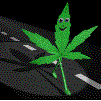








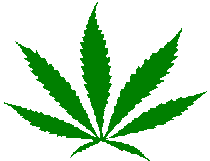


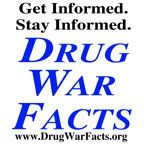
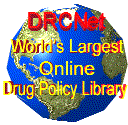
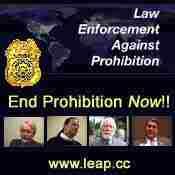
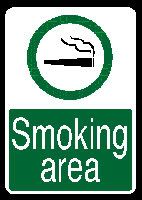

No comments:
Post a Comment